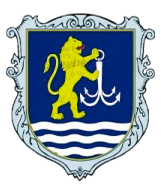INNOVATIVE TECHNOLOGIES AND REGULATORY FRAMEWORK FOR OPTIMIZING ENERGY CONSUMPTION IN MARITIME TRANSPORT
Abstract
Introduction. The energy efficiency of maritime transport is a key research area due to growing environmental regulations and the need to optimize fuel consumption. Although shipping is a vital sector of the global economy, it is also a major source of greenhouse gas emissions, particularly CO₂, NO2, and SO2. To mitigate these impacts, organizations like the International Maritime Organization (IMO) have established regulatory measures to enhance fleet efficiency. Key initiatives include the Energy Efficiency Design Index (EEDI) for new ships, the Ship Energy Efficiency Management Plan (SEEMP) for operational improvements, and the Energy Efficiency Operational Indicator (EEOI) for assessing in-service performance. Alongside regulations, emerging technologies such as digital twins, predictive analytics, AI-driven control systems, and alternative fuels are gaining importance. These innovations optimize ship performance by leveraging real-time data and environmental conditions, reducing fuel consumption and emissions. Additional strategies, including hybrid propulsion systems, fuel-efficient hull coatings, and advanced energy recovery technologies, contribute to improving energy efficiency. However, largescale adoption faces challenges such as high capital costs, infrastructure limitations, and the need for specialized training. Purpose. This study aims to examine innovative technologies, regulatory frameworks, and predictive modeling methods for optimizing energy use in maritime transport. It evaluates the impact of international standards (EEDI, SEEMP, EEOI) and advanced solutions like digital twins, machine learning, alternative fuels, and intelligent management systems. The focus is on their role in reducing fuel consumption, emissions, and improving overall sustainability. Results. Findings suggest that integrated approaches significantly lower fuel consumption and CO₂ emissions. The study confirms that digital technologies and energy management systems enhance ship efficiency by optimizing routes, speed, and engine loads in real time. Furthermore, the shift to alternative fuels such as liquefied natural gas (LNG), methanol, and hydrogen holds promise for reducing emissions, though it requires substantial investments and technological adaptation. Conclusions. The combination of regulations, technological innovations, and predictive modeling is crucial for achieving maritime energy efficiency. These methods optimize fuel use while promoting environmental sustainability. Future research should focus on refining energy efficiency forecasting models and developing adaptation strategies for stricter environmental standards. Further investigation into alternative fuel viability and hybrid propulsion optimization is necessary to facilitate a cost-effective transition to low-carbon shipping.
Downloads
References
2. International Maritime Organization (2023, July). 2023 IMO strategy on reduction of GHG emissions from ships. https://www.imo.org/en/OurWork/Environment/Pages/IMO-Strategy-on-reduction-of-GHGemissions-from-ships.aspx
3. Hüffmeier, J., & Johanson, M. (2021). State-of-the-art methods to improve energy efficiency of ships. Journal of Marine Science and Engineering, 9(447). https://doi.org/10.3390/jmse9040447
4. Rajeev, J. (2018). Ship energy efficiency: Here is all you need to know. Retrieved from: https://www.myseatime.com/blog/detail/ship-energyefficiency
5. Maritime Cyprus. (2018). Energy efficiency in shipping: Why it matters. Retrieved from: https://maritimecyprus.com/2018/04/03/energyefficiency-in-shipping-why-it-matters
6. International Maritime Organization (2016). Train the trainer (TTT) course on energy efficient ship operation: Module 2 — Ship energy efficiency, regulations and related guidelines. London.
7. International Maritime Organization (2009). Guidelines for voluntary use of the ship EEOI. MEPC.1/Circ.684.
8. International Maritime Organization (2013). Guidance on treatment of innovative energy efficiency technologies for calculation and verification of the attained EEDI for ships in adverse conditions. MEPC.1/Circ.815.
9. Yuan, Y., Li, Z., Malekian, R., & Yan, X. (2017). Analysis of the operational ship energy efficiency considering navigation environmental impacts. Journal of Marine Engineering & Technology, 16(3), 150–159.
10. GloMEEP. (n.d.). Energy efficiency technologies information portal. Retrieved from: https://glomeep.imo.org/resources/energy-efficiencytechologies-information-portal
11. Shivam, S. (2019). Ship energy efficiency. Retrieved from: http://themarineexpress.com/ship-energy-efficiency
12. Hannes, J., & Styhre, L. (2015). Increased energy efficiency in short sea shipping through decreased time in port. Transportation Research Part A: Policy and Practice, 71, 167–178.
13. Comer, B., & Osipova, L. (2021). Accounting for well-to-wake carbon dioxide equivalent emissions in maritime transportation climate policies. Retrieved from: https://theicct.org/publication/accounting-for-well-to-wake-carbondioxide-equivalent-emissions-in-maritime-transportation-climate-policies 14. Rayhan, F. (2021). Ship pollution and emission: A recent fact ship emissions & pollution: A real threat to global warming.
15. Yan, S. (2012). Study on ship pollution prevention measures. In 7th International Conference on System of Systems Engineering (SoSE) (pp. 283–285).
16. Melnyk, O. M., Onishchenko, O. A., Shibaev, O. G., Kuznichenko, S. O., Bulgakov, M. P., Shcherbina, O. V., Yaremenko, N. O., & Voloshyn, D. A. (2024). Development of strategies for reducing nitrous oxide emissions from marine diesel engines. Journal of Chemistry and Technologies, 32(2), 465–479. https://doi.org/10.15421/jchemtech.v32i2.297410
17. Melnyk, O. M., Onishchenko, O. A., Shyshkin, O. V., Volkov, O. M., Volyanskyy, S. M., Maulevych, V. О., & Kreitser, K. O. (2024). Enhancing shipboard technical facility performance through the utilization of lowsulfur marine fuel grades. Journal of Chemistry and Technologies, 32(1), 233–245. https://doi.org/10.15421/jchemtech.v32i1.297916
18. Rodríguez García, M. I., Rodrigues, M., González-Enrique, J., Ruiz Aguilar, J., & Turias, I. (2023). Forecasting air pollutants using classification models: A case study in the Bay of Algeciras (Spain). Stochastic Environmental Research and Risk Assessment, 1–25. https://doi.org/10.1007/s00477-023-02512-2
19. Thomson, H., Corbett, J. J., & Winebrake, J. J. (2015). Natural gas as a marine fuel. Energy Policy, 87, 153–167.
20. Jang, J., Ahn, S. Y., Na, S., Koo, J., Roh, H., & Choi, G. (2022). Effect of a plasma burner on NOx reduction and catalyst regeneration in a marine SCR system. Energies, 15(4306). https://doi.org/10.3390/en15124306
21. Micco Di, S., Silvestri, L., Antonio, F., Jannelli, E., & Minutillo, M. (2022). Economic-comparative study for carbon neutrality during ships docking and in port operations: A path towards maritime sector decarbonisation. Journal of Physics: Conference Series, 2385, 012049. https://doi.org/10.1088/1742-6596/2385/1/012049
22. Ding, J., Mijling, R., Jalkanen, J. P., Johansson, L., & Levelt, P. (2018). Maritime NOx emissions over Chinese seas derived from satellite observations. Geophysical Research Letters, 45. https://doi.org/10.1002/2017gl076788
23. Fu, Q., Shen, Y., & Zhang, J. (2012). On the ship pollutant emission inventory in Shanghai port. Journal of Safety and Environment, 12, 57–64.
24. Tian, Y., Ren, L., Wang, H., Li, T., Yuan, Y., & Zhang, Y. (2022). Impact of AIS data thinning on ship air pollutant emissions inventories. Atmosphere, 13(1135). https://doi.org/10.3390/atmos13101135
25. Indian Register of Shipping. (2015). Implementing energy efficiency design index. Mumbai. Retrieved from: http://www.irclass.org/files/marine_publications/EEDI_2015.pdf
26. Pronin, S., Belousov, E., Marchenko, A., Gritsuk, I., & Bulgakov, N. (2020). Research of the gas fuel supply process on the compression stroke in ship’s low-speed gas-diesel engines. SAE Technical Paper, 2020–01–2107. https://doi.org/10.4271/2020-01-2107
27. International Maritime Organization (2015). Third IMO GHG study 2014: Executive summary and report.
28. Bilgili, L. (2021). Life cycle comparison of marine fuels for IMO 2020 sulphur cap. Science of the Total Environment, 774, 145719.
29. Theotokatos, G., Stoumpos, S., Bolbot, V., & Boulougouris, E. (2020). Simulation-based investigation of a marine dual-fuel engine. Journal of Marine Engineering & Technology, 19(Sup1), 5–16.
30. Ammar, N. (2023). Methanol as a marine fuel for greener shipping: Case study tanker vessel. Journal of Ship Production and Design, 39, 1–11. https://doi.org/10.5957/JSPD.03220012
31. Petetin, H., Guevara, M., Compernolle, S., Bowdalo, D., Bretonnière, P. A., Enciso, S., Jorba, O., Lopez, F., Soret, A., & Pérez García-Pando, C. (2023). Potential of TROPOMI for understanding spatio-temporal variations in surface NO2 and their dependencies upon land use over the Iberian Peninsula. Atmospheric Chemistry and Physics, 23, 3905–3935. https://doi.org/10.5194/acp-23-3905-2023
32. Melnyk, O., Onyshchenko, S., Onishchenko, O., Shumylo, O., Voloshyn, A., Ocheretna, V., & Fedorenko, O. (2024). Implementation research of alternative fuels and technologies in maritime transport. Studies in Systems, Decision and Control, 510, 13–21. https://doi.org/10.1007/978-3-031-44351-0_2





